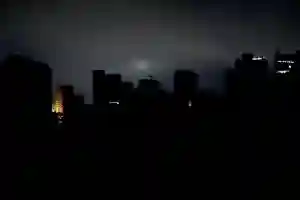Former ZESA Holdings chief executive, Josh Chifamba, said that the sub-economic tariff which the power utility has been charging “for a long time” is the main reason for the current electricity crisis.
Last week, the Zambezi River Authority (ZRA), which manages Kariba Dam, ordered ZESA to stop production at the Kariba South hydroelectric plant because of low usable water levels.
ZRA advised ZESA that a further review of the substantive Hydrological Outlook at Kariba will be undertaken in January.
Kariba is the country’s largest power plant, with the capacity of producing 1 050MW, and has been the most reliable.
The ageing Hwange Thermal Power Station, which is the country’s second-largest plant, has become unreliable because most of its equipment is obsolete.
Speaking during an interview with Business Weekly, Chifamba said:
Issues in the sector have been left unresolved for far too long. The main Achilles’ heel has been sub-economic tariffs and an unfavourable macroeconomic environment. That has to be fixed.
He said the country should have invested in new power stations to avoid over-relying on Kariba Power Station.
Chifamba said the rationale for Kariba expansion was that with additional generators, load shedding, especially at peak, would be alleviated. He said:
Kariba would change from running as a base load (24-hour) station and operate as a mid–merit cum peak (18-hour) station.
You cannot run Kariba as a base load station because that consumes a lot of water.
The impact on the economy can be so huge. We had a similar situation in 2015 when water levels declined and production went down to around 200 MW.
That is why we resorted to bringing on Dema (diesel power plant) (The situation was so bad).
So the addition of generators at Kariba is not, in and of itself, the cause of the water problem at Kariba.
Chifamba noted that Zambia’s ZESCO, with the same capacity as ZESA at Kariba; after having built new power stations; has kept within its water allocation.
He urged ZESA to immediately move towards a cost-reflective tariff to enable the country to import. Said Chufamba:
They should try to mop up power in the region’ so they need to revise the tariffs so that they will have (enough) equivalent Zimbabwe dollars to pay for the imports.
Currently, customers are paying US9.2c kWh, excluding exporters, which can be paid in local currency at the prevailing interbank rate.
Exporters, with effect from October 1, 2022, are paying US10.12c per kWh.
Meanwhile, the World Bank carried out a study on the country’s power tariff regime and recommended a cost-reflective price of US15c kWh.

